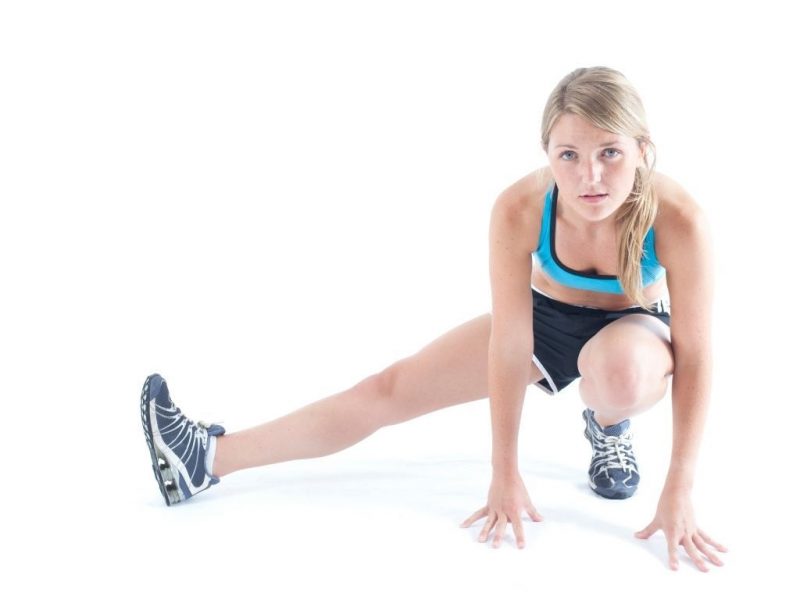You know that starting a workout session without warming up is not a good idea. Nor is it a given that a few shoulder circles and leg lifts will do the job. Let’s see why warming up is so important, and what types there are.
You can read in this article about the following topics:
- Why is warming up important
- Types of warm-up
- General warm-up
- Special warm-up
- Active warm-up
- Passive warm-up
Why is warming up important
The purpose of warming up before a workout is to prepare the body for an increased intensity in physical activity. When you start moving, your whole body moves from a state of rest to a state of increased activity.
If you do the warm-up right, your body will respond as it follows:
The heart rate increases and breathing becomes more rapid, causing more oxygen to enter the body.
As a result of the increased blood flow, the temperature of the muscles goes up, the muscle fibers become more flexible, the risk of muscle injuries, muscle tears, and strains decreases. By moving the joints, fluid production in the joint capsules increases, the joints move more easily, thus reducing the risk of injuries. Your nervous system also prepares for the workout, making it easier to do the exercises correctly.
When warming up, pay attention to increasing the intensity gradually. The duration is also influenced by external factors. In colder weather, it takes longer for the muscles to warm up, so you can do longer warm-up sessions. You should also devote more time to warming up in the morning, as the muscles and joints are still stiff, there is a higher risk of injury. Just think about how slowly you move when you get up in the morning, but you’re almost unstoppable in the afternoon.
Did you think warming up can be more than just a short pre-workout gymnastics?
Types of warm-up
- general
- special
- active and
- passive warm-up.
General warm-up
General warm-up prepares the muscle system, joint system, cardiovascular system, nervous system, and sensory system for the task ahead.
The muscular system is prepared by loosening the rigid resting state of the muscles, raising their temperature, and increasing the oxygen supply to the heart and skeletal muscles.
While we are preparing the joint system, we lubricate the joints, increasing the range of motion of the active and passive joints, and we try to maximize the range of motion we already had – by developing them – in those joints.
The preparation of the cardiovascular system is done by raising the resting heart rate to 40-50% of the maximum working heart rate. We can prepare our nervous system and sensory system by using movements that continuously change direction and body position.
Special warm-up

The special warm-up is completely sport-dependent, and as mentioned, it follows the general warm-up session. In ball sports, the basic ball-handling exercises count as warm-up, in running, the emphasis is on stretching and warming up the leg muscles, while in wall climbing, the most important thing is to work the arm, elbow and wrist joints. If you want to go cycling, you need to warm up from waist to ankle, but since you also use your hands and shoulders as well, don’t forget to stretch them either.
Active warm-up
An active warm-up means doing a specific set of exercises. Fortunately, the range of warm-up exercises is diverse, so warm-up doesn’t have to be a boring, tedious hassle. You can start with simple gymnastics, but you can even use a treadmill to reach the desired muscle temperature.
Passive warm-up
The purpose of the passive warm-up is the same as that of active warm-up, specifically to increase the temperature of the body and the muscles. However, passive warm-up uses completely different tools to do this. Passive warm-up includes taking a hot shower, a massage, or the most effective tool, warm-up creams.
The components of warm-up creams may be different, but their mechanism is the same: they increase circulation, a larger amount of fresh blood flows to the area, thus warming up and relaxing the muscles. By using warm-up creams, the time of active warm-up can be shorter, and the risk of injuries and strains is significantly reduced. It also helps to avoid muscle soreness, which ensures the continuity of workouts and improved well-being.
Using warm-up creams is especially recommended if you have had an injury before, you want a shorter warm-up session, or you start training early in the morning.
If you do diverse exercises and help the process with a warm-up cream, you will have an awesome workout session. And if you don’t skip stretching after working out, you will avoid muscle soreness the next day and you can’t wait for your next workout.

